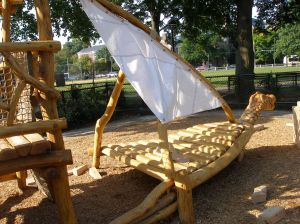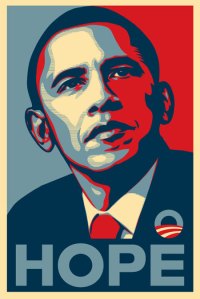In pondering the curators' decisions to highlight these artists, I can't help but conclude that they're...
Institute of Contemporary Art
Not only is each work beautiful and provocative in itself--but the Roni Horn show as...
At long last, the new Alexander Kemp Playground on the Cambridge Common is open! It's the most...
On closer inspection, it becomes clear that Fairey has greatly transformed the photo, which he uses...


